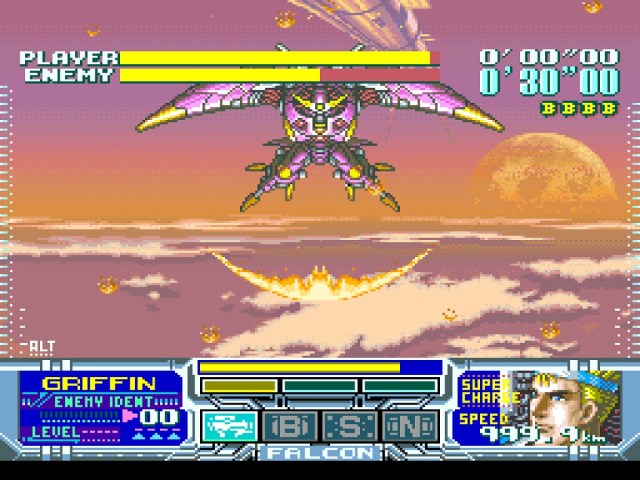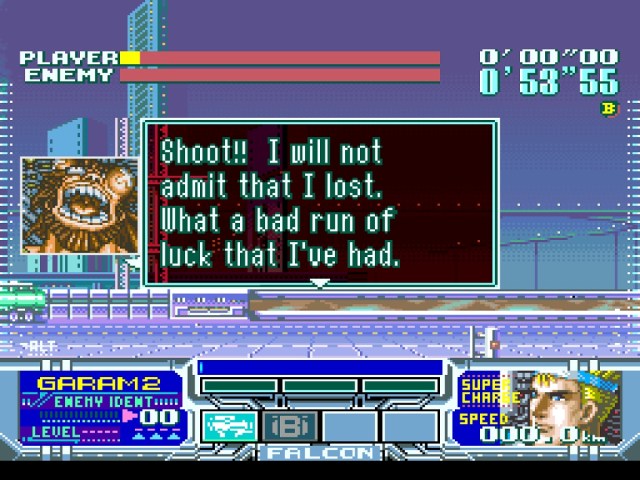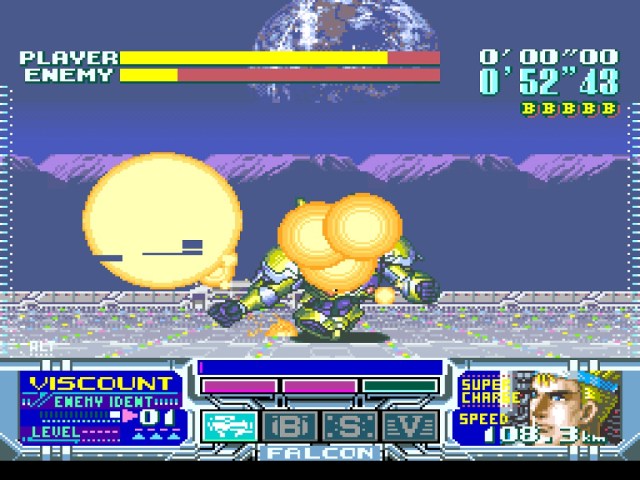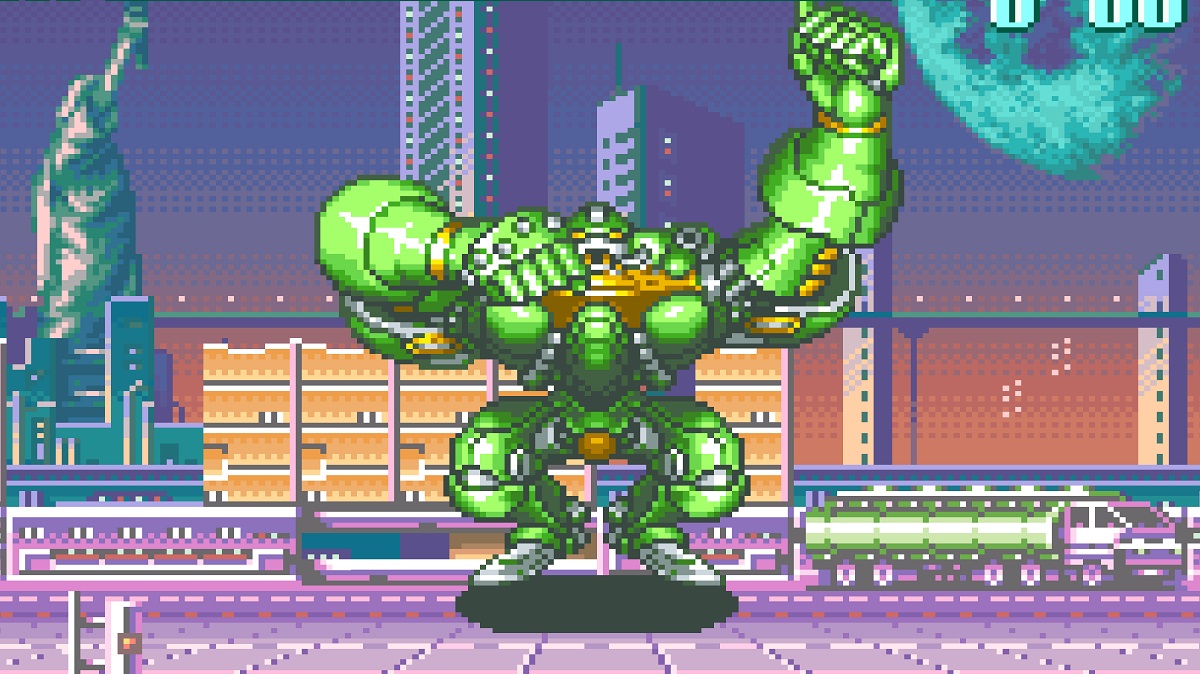Space Bazooka
Expanding on everything that made Battle Clash great, Metal Combat: Falcon’s Revenge is a sequel in everything but name. I have no idea why. It’s not that Battle Clash is a great name, but changing the brand and then attaching a subtitle makes it sound unrelated. I guess we should be happy that they didn’t change over to the Japanese nomenclature for Battle Clash. They called it Space Bazooka. That’s just what I’d call the Super Scope if I was trying to make fun of it.
If you didn’t read my article last week, Battle Clash was a game for Nintendo’s space bazooka, the Super Scope. Nintendo decided to follow up the success of their ubiquitous NES Zapper by severely overcompensating. The Super Scope was absolutely a space bazooka. You rested that baby over your shoulder and fired digital death at your TV. It was actually pretty awesome, as long as you remembered to turn it off when you were done. Otherwise, it would completely drain the six AA batteries required to power it.
Battle Clash was one of the best games to utilize this escalation of infrared arms. Metal Combat: Falcon’s Revenge does even better than that; it’s one of the best lightgun games ever developed.

More layered than a lasagna
Supposedly picking up after Battle Clash, Metal Combat: Falcon’s Revenge basically goes over the exact same story as the previous game. There’s some sort of “battle sport,” and you and your pilot are using it to take down a big boss because they’re doing bad things. Sometimes, the characters reference things that happened before, but no one says anything about having already taken down the big bad boss.
What’s funny is that there’s more focus on story in Metal Combat, but no one seems interested in explaining why saving the world didn’t work last time.
Metal Combat’s story has a lot of misdirection in it. By the time you get to the baddie from the last game to re-kick his butt, you’ve probably already started wondering why the game seems to be so short. But then you just keep going deeper and deeper into space, even journeying to Uranus to beat Momma. I’m sure there’s an obvious joke in there somewhere, but the humor center of my brain seems to have called in sick today.
It really pulls the “they were just a pawn” to a comical extent. Like, you are absolutely a fool for thinking the past three dudes were the real dude. This master plan has more layers than a lasagna. What’s funnier is that Metal Combat really plays it straight, going as far as having three endings. Like, just get off my screen and let me shoot robot dongs.

The levels of engorgement
There are a number of obvious enhancements to Metal Combat. The biggest difference is that they’ve doubled down on ensuring that your rapid-fire is used primarily for eliminating enemy projectiles. In Battle Clash, it could at least tickle an enemy’s sensitive areas, but in Metal Combat, it’s barely a gentle caress.
The trade-off to this is that now your charged shot has three levels of engorgement. The final level, the treble shot, is devastating if you can land it on a weak point. It gives the strategy a bit of risk and reward, as waiting to fire until your space bazooka is turgid with power will leave you vulnerable to attack.
You also get a selection of side weapons that grow after each fight. Unless the game told me specifically to do so, I never used anything aside from the basic bomb. Those things work just fine, and I’m afraid of learning new things.
Speaking of which, there’s actually a second ST you can play as, Tornado. She’s unlocked after completing the base game. The functions of it are just different enough to shake things up without completely flipping the game on its head. Unused data from Battle Clash implies that alternate mechs were planned for that game, so it’s nice to see the feature was followed up on.
It also makes better use of weak points. You can still shoot the limbs off many of the enemies, but a lot of them don’t even have limbs. In Battle Clash, as long as your shots hit the enemy, you’re probably doing damage, but Metal Combat requires a bit more thought. It’s extremely satisfying to trim off three-quarters of an enemy’s life bar with a single shot, and that’s one place that Metal Combat is a big improvement.

What a bad run of luck
The multi-player mode deserves special mention. Since having two Super Scopes on a single TV is neither an option, nor a practical expectation, one of the players uses the control pad. They control one of the enemy boss mechs and battle against the armed player in the Falcon. It’s actually a really fun mode, especially considering that in games like Yoshi’s Safari, the second player was usually relegated to distracting support roles.
Metal Combat is just good fun. When compared to a lot of light gun games that were trying to be edgier and more hardcore, it’s a colorful and entertaining mix. The one-on-one mech battles feel a lot more personal and intimate than mowing down legions of interchangeable dudes. The added story is ridiculous, but feels appropriately Super Nintendo.
I don’t really think Nintendo had much faith in the product. The Super Scope was already something of a flop, with Metal Combat never even being released in Japan due to it being even more unpopular there. However, the team at Intelligent Systems was undeniably a talented one. Many of them continued with the developer for years to come. It’s just unfortunate that it kind of got sucked into the space bazooka’s failure. The Wii probably would have been a great platform for a revisit to the series, but I have my doubts that very many of the higher-ups even know it ever existed.
For other retro titles you may have missed, click right here!


